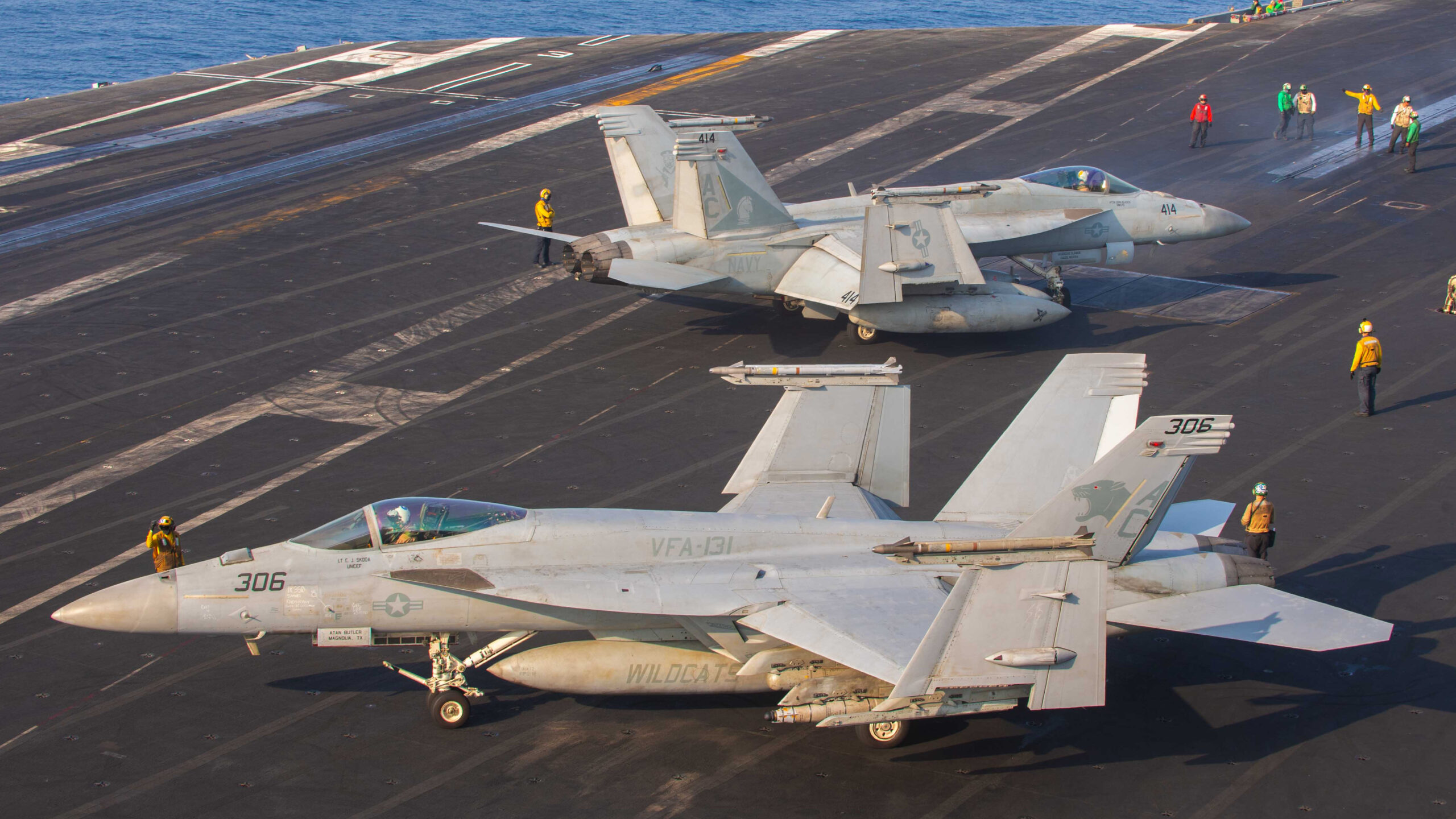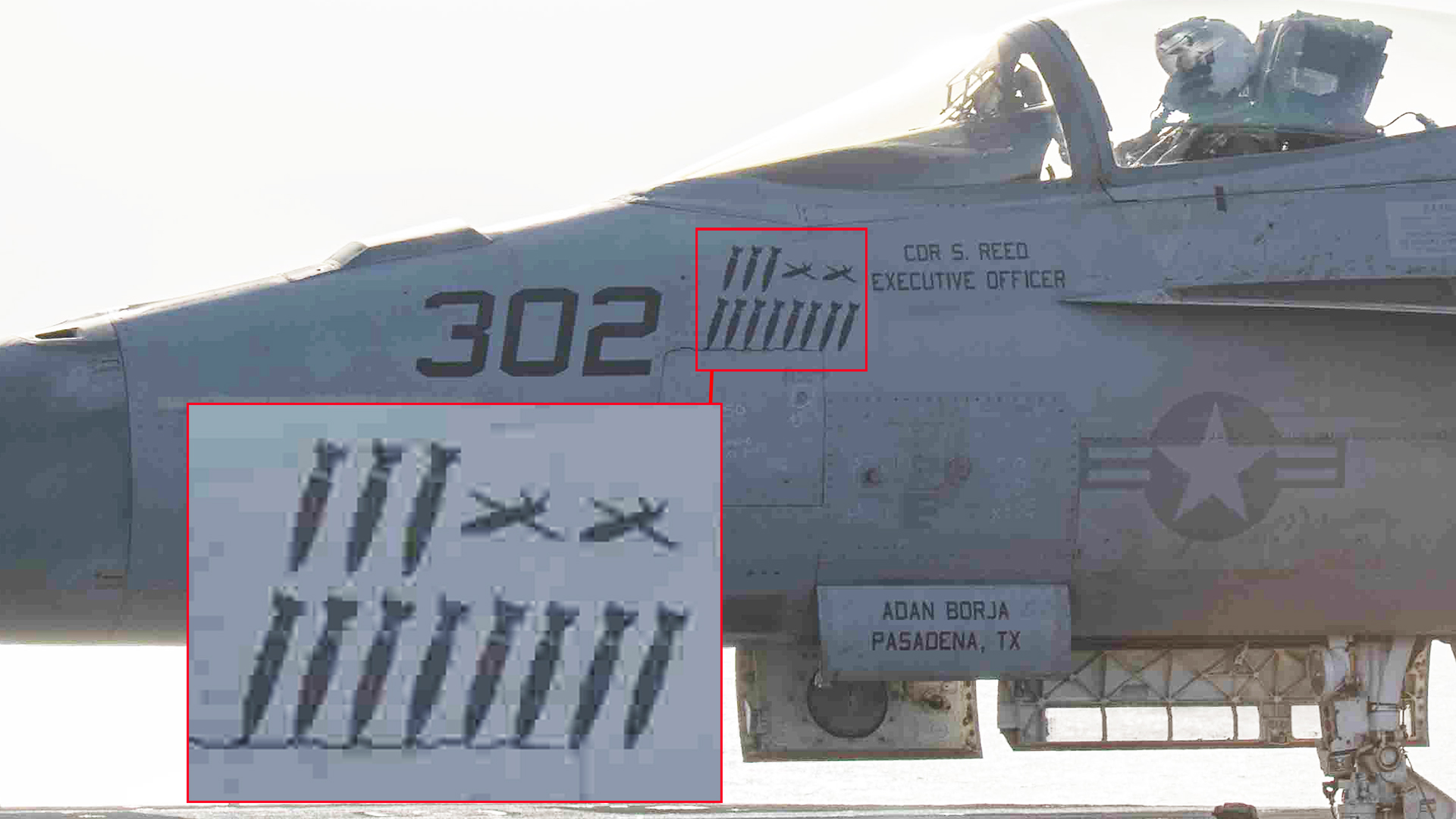Some of the U.S. Navy’s F/A-18E/F Super Hornets deployed aboard the USS Dwight D. Eisenhower (aka the IKE), the supercarrier that has been on station in the Gulf of Aden for months, are now adorned with kill markings to commemorate the downing of Houthi drones. We have already seen similar markings, which have a long military tradition, being stenciled onto warships that have swatted down similar threats in the region. However, it is new, at least to us, to see these markings on fighter aircraft taking part in the operation.
The War Zone was among the first to report that Navy Super Hornets had begun engaging Houthi drones as the crisis in the region spooled up over the last five months. Since then, the shooting down of drones has become something of a regular occurrence, with jets from other services also taking them down, as well as French fighters.

The U.S. Navy posted imagery of operations on the ‘IKE,’ seen at the top of this story, which clearly shows one of its Super Hornets, an F/A-18E from VFA-131 “Wildcats,” wearing the silhouettes of Houthi drones, as well as those of bombs. The latter symbolizes successful air-to-ground strike missions. The drone silhouette looks to be representative, in general, of the Sammad family of one-way attack drones the Houthis have used for years now.
In addition to shooting down drones launched by the Yemeni militant group, American and British forces have been striking military targets related to its operations. These have included air defense systems, weapons storage sites, and command centers. Yet the vast majority of the near-constant weapons drops have been focused on time-sensitive targets, such as drones and missiles being set up to launch. Much of this challenging mission has fallen on the IKE’s air wing.
A recent BBC report by Jonathan Beale also has an image of drone kill marks on another Super Hornet aboard the IKE and some details about the ongoing crisis the carrier is responding to in the region.
The story quotes Captain Dave Wroe, who commands the four U.S. Navy surface combatants that are providing protection for IKE and other marine traffic passing through its operating area. He states that the operation is “dangerous stuff” and that the direct and persistent threat to U.S. Navy assets was the highest since WWII in terms of potential to be fired on at any moment and on a daily basis.

The BBC also noted the kill markings, reporting: “On the side of each cockpit they’ve painted the silhouettes of the bombs they’ve dropped, the radar stations destroyed, and the drones they’ve shot down from the air. They’ve already fired more than 300 bombs and missiles.”
A month ago, the U.S. Navy said its surface combatants had fired off over 100 examples of the Standard series of surface-to-air missiles while taking on the Houthi’s drones and cruise and ballistic missile attacks. As for what the F/A-18E/Fs are using to take down the drones, the AIM-120 has proven most successful historically against Houthi drones, but the AIM-9X can also be used to bring them down. Employing guns is a much more challenging and potentially dangerous proposition against such a small, slow-moving target.
The high price of using missiles, which cost, at best, half a million dollars apiece and can be up to multiple millions of dollars each, to shoot down drones costing just thousands of dollars, as well as the impact on missile inventories these operations have, is a topic we have delved into in great detail. The Navy is now looking for Congress to provide the funds needed to resupply all the weapons used against the Houthi’s onslaught outside of the current budget proposal in the form of a supplemental spending initiative.

Rear Admiral Miguez, commander of IKE’s air wing, made it clear to the BBC who is behind the Houthi’s anti-shipping campaign in and around the Bab el-Mandeb strait:
“Iran is backing the Houthis right now, not only with weapons and technology, but also providing targeting information intelligence and support… The roots of this start with Iran.”
As for how long IKE, the Navy’s second-oldest active carrier, will stay on scene as the hub of the counter-Houthi operations in the region, that isn’t clear. The carrier sailed from Norfolk on its current cruise on October 14th, 2023.
With five months of operations under its belt, and no sign of the crisis in the region being resolved anytime soon, what is clear is that IKE will have to sustain its very high tempo of operations for the foreseeable future, at least until it can be relieved.
Contact the author: tyler@twz.com
